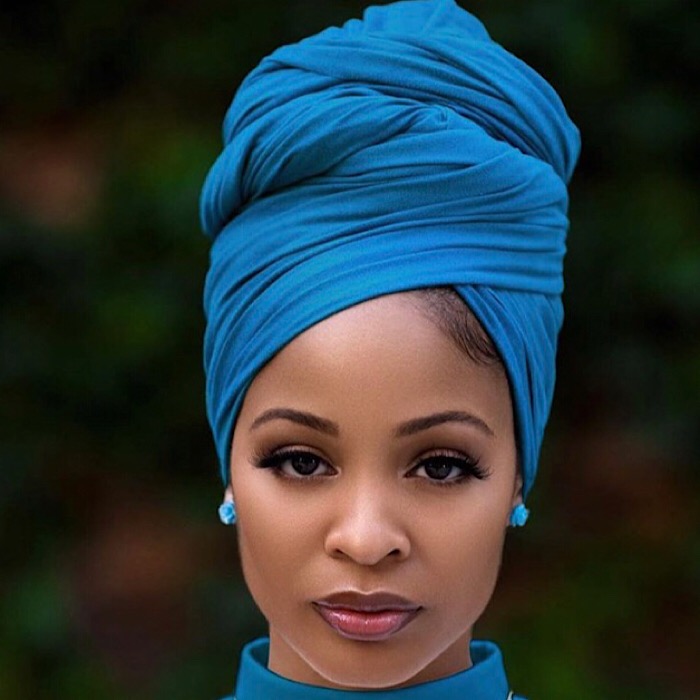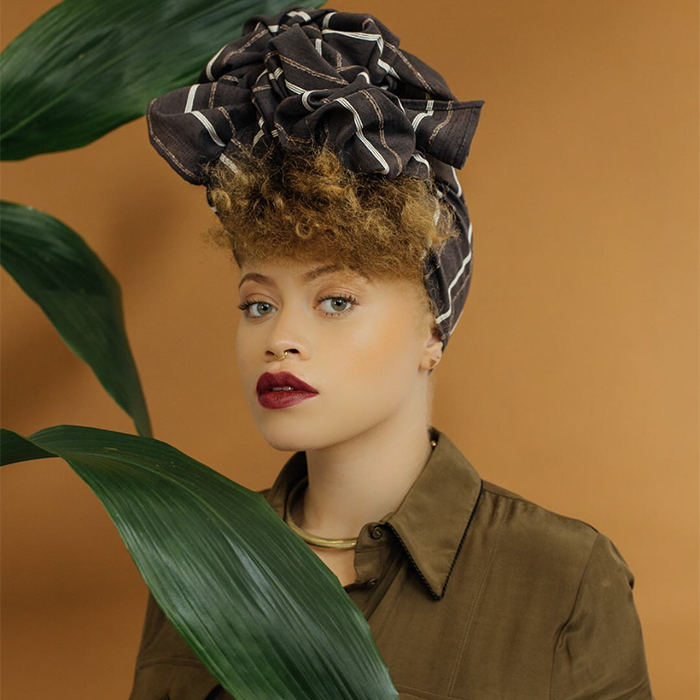
Image Source: @naturallycurly, of @neelam
As I’m currently on this journey of self-discovery as it relates to my hair, I definitely have days when I want to let my soul glow in all of its fullness, weeks when my tresses are tucked away in medium-sized box braids and times when I prefer to put my hair up in a scarf, hat or turban. When it comes to that last part, what I adore about that particular option, is it’s such a simple yet stylish solution to bad hair days, rushed mornings or when it’s unbelievably hot outside and I’d prefer to keep my hair out of my face.
For the most part, wrapping my hair up in one of these ways is a beautiful solution. At the same time, I must admit, that I did experience a season when I was so comfortable with tying my hair up in a scarf, that I began to notice a little bit of breakage around my hairline. It wasn’t due to the quality of the material; it was because the scarves were tied too tight. Plus, I was always tying my scarf up the same way.
Since scarves, hats and turbans are hair solutions that I’m pretty sure others resort too as well, in the hopes that they work for and not against you, I wanted to share what a little trial and error has shown me will protect my tresses when they are underneath those styling options.
Deep Condition with Chebe Powder
It’s certainly no secret that something that I’ve become a huge fan of is chebe powder. If you’re not familiar with what that is, basically it’s a powder that originated from a tribe in the Chad Republic that has a great reputation for helping women with 4-type hair to grow their tresses bra-length or longer. It’s able to do that because the properties in it deeply moisturize hair, nourish hair follicles and even thicken hair strands over time. That’s why I recommend using it as a deep conditioner (check out how to make one here“>, at least once a month. That way, you don’t have to worry about your scarves, hats or turbans drying your hair out.
Now I will give two heads up—chebe powder (which you can easily find on Amazon or even sites like Etsy”> isn’t the cheapest in the world (I usually spend around twenty bucks for 50 grams”> and, in order to get the most benefits from it, you should leave it in your hair for 5-8 hours. But I am pretty confident that the investment of your money and your time will make it well worth your while if length retention is what you’re after.

Image:@fanmdjanm
Apply a DIY Leave-In Conditioner
In between washes, something else that you should do is apply a leave-in conditioner to your hair; this is especially important if you plan on wearing a straw hat in the summer or a wool hat in the winter because you need to protect your hair from harsh weather conditions (like UV rays”> and materials that can decrease moisture from your hair (like wool”>.
Although there are plenty of leave-in conditioners on the market, that work pretty well, don’t underestimate the effectiveness of DIY leave-ins too. By opting to make some yourself, you can keep all chemicals out of your hair (if that’s what you want to do”> while also figuring out exactly what ingredients work for you (and which ones don’t”>. If you want some step-by-step instructions, check out some cool videos here, here and here.
Put Your Hair in a Protective Style
OK, I’ll be the first to admit that this is a tip that I am guilty of not keeping. It’s because, when I do want to use one of these three options, I tend to go the scarf route and, as my hair gets bigger and fuller, sometimes I don’t want to braid it down because I want the scarf to have some high volume to it. Problem is, if I wrap my tresses up in a scarf too much without putting it into some sort of protective style, that is when breakage can start to occur. So yeah, if you want to keep your hair from “catching” in your hats or your non-silk or satin scarves from drying out your hair (including your ends”>, putting your hair into a protective style first is always a smart idea.
Wrap It Up in a Scarf
This is a tip that is specifically reserved for when you plan on putting on a hat or turban. A silk or satin scarf will not only help to keep moisture in your hair, it will also reduce the friction that especially hats tend to cause if you wear them for hours at a time. If you tie the scarf to where it wraps around to the front, once you put your hat or turban on, it can actually be a really cute look.
Adjust These Items (and Make Sure They’re Not Too Tight”>
Another thing that I am guilty of? Putting on hats that are too tight or tying my scarfs to where they are too tight too (that’s how the hair around my hairline started to thin and break”>. Pulling a brim really close to your eyes or tying a scarf to where it almost makes the sides of your hair appear sleek may be cute, but it can wreak pure havoc on the hair that they are putting pressure on. That’s why it’s important to not always tie your scarves the same way and to avoid getting a hat or turban that doesn’t provide a truly comfortable fit.
Take a Break from Scarves, Hats and Turbans
Finally, one of the best ways to get the most out of scarves, hats and turbans is to not wear them all day, each and every day. While they really are some of the best style options going, your hair needs a break from time to time (especially if you wrap it up with a scarf or bonnet ever night”>. So, if you can, try and use these options three days a week, at the most. On the other days, go with a wash-n-go, a protective style or even a blowout.
Remember, scarves, hats and turbans are cool options—but let your curls be seen every once in a while. They’re beautiful. They should be!
Know of some other helpful tips for protecting curls under hats and other toppers? Share them in the comments below!
